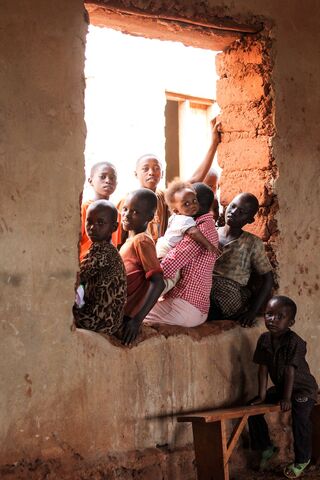Environment
Why Children Raised in Harsh Conditions Grow Up Quickly
A child's early environment can influence their life's course.
Posted September 16, 2022 Reviewed by Tyler Woods
Key points
- Life History Strategy Theory (LHST) offers a glimpse into one sliver of the remarkable wisdom behind the continuation of the human race.
- Growing up under lower socio-economic conditions can be linked to bearing more children.
- Less affluent people commonly have more children at a younger age—often as teenagers.
- Children who grow up in harsh poverty can be more likely to grow up quickly, live dangerously and have shorter lives.
South African researchers Barak Morgan, Xanthe Hunt and Mark Tomlinson explain the Life History Strategy Theory (LHST) as the adaptive way in which a child’s early environment influences their later developmental trajectory. An adverse environment and an early childhood experience of harshness, poverty, unpredictability, and threats to survival steer a child’s development towards a "fast" strategy.

A fast strategy comprises rapid growth to maturity and early reproduction that aims to produce as many offspring as possible with relatively little parental investment in those offspring. The natural wisdom of this is that people who grow up in challenging, perhaps dangerous and threatening environments, should grow up as quickly as possible and have as many children as they can because life has shown itself to be potentially short and brutal. The aim is for the human race to continue and for reproduction to take place before an inevitably early death. Something has somehow signaled to the minds and bodies of these individuals that they may not have the luxury of living a long and comfortable life. There is no sense, therefore, in long-term planning.
On the opposite end of the continuum, children who grow up in relatively more safe and stable environments, where there is not a constant threat to their psychological and physical existence, are more likely to follow a "slow" life strategy, where their developmental path is likely to be more extended. They might take longer to grow up, have fewer children and later in life, with more investment of time in the children.
Morgan, Hunt, and Tomlinson explain that the environment an individual encounters early in life (favourable or adverse) shapes their development in strategic ways that are adaptive under those conditions. Someone who grows into a world of opportunity and privilege would benefit from education and career development, with the promise of a long life ahead and plenty of time to raise children. But if the growing up environment suggests that there is more chance of danger, possible starvation, or widespread illness, it's more beneficial for the continuation of the species for as many children as possible to be born, because some of them are not likely to survive long enough to produce their own children.
Children growing up in poverty and under socio-economic stress can become locked into fast life history strategy behaviours from an early age. These behaviours are associated with increased health and psychosocial risks. They can include becoming sexually active early in life—sometimes leading to teenage pregnancies, aggressive behaviour, substance abuse and impulsive decision-making. The expected adolescent risk-taking behaviours (binge drinking, sexual promiscuity, smoking) could be exacerbated, with consequent dangers and threats to health. Mentally, the expectation of living a long and meaningful life was never there anyway. Self-preservation doesn't seem so important when suffering has always been part of everyday experience.
On the other hand, slow life history strategy behaviours are more adaptive in middle-class communities and in more affluent areas. The expectation is of a long life with help if there is danger and access to medical care should there be illness. Girls in privileged communities often grow up with a tendency to value their independence and their careers. Delayed child-bearing often goes hand in hand with tertiary education for women and their movement into the workplace. It sometimes goes hand in hand with smaller families, partly because women are balancing the demands of their careers and motherhood.
Life History Strategy Theory is just one of the many factors that can contribute to the ways in which childhood experience influences the development and quality of life as an adult. The outcomes are not fixed and there is variability, depending on the people in a child's life, genetics, intrapsychic and interpersonal factors, trauma, and numerous other influences—many of which are elusive and hard to measure or predict.
References
Morgan, B.; Hunt, X. & Tomlinson, M. (June 2017). Thinking about the environment and theorising change: How could life history strategy theory inform health interventions in low and middle income countries? Global Health Action 10(1)


